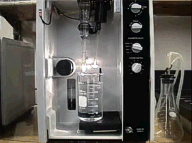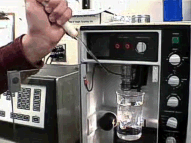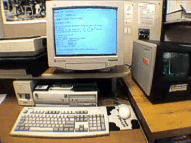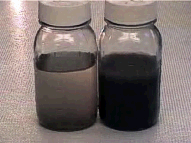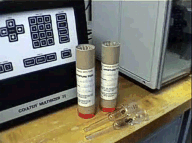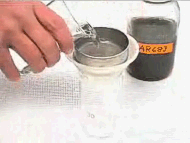|
|
|
|
VIDEO FRAME
|
NARRATIVE
|
|
|
The Coulter Counter
Multisizer IIe determines distributions of silt and clay-sized
particles suspended in a conductive liquid by forcing the suspension
to flow through a small aperture. |
|
|
As a particle passes through the aperture, it
changes the resistance between the internal and external electrodes.
This produces a current pulse of short duration having a magnitude
proportional to the particle volume. |
|
|
To minimize coincidence, or
measuring more than one particle at a time, the concentration of the
suspension may be adjusted. Acceptable concentrations limit the
number of particles passing through the aperture to less than 1,000
per second. |
|
|
During analysis of a sample, the series of
pulses is electronically classified by size and counted. |
|
|
After an analysis is
completed, the data is logged on a computer. |
|
|
The silt and clay fractions of geological
samples usually have a large particle diameter range. If this
diameter range exceeds 20:1, more than one size aperture tube must
be used. |
|
|
The first analysis is
performed with a 200-micron aperture tube; a 30-micron aperture tube
is used during the second analysis. The analyst first performs all
of the 200-micron aperture analyses, then swaps aperture tubes and
changes the machine settings. |
|
|
Before the 30-micron aperture analyses are run,
the analyst must split each sample with a 20-micron sieve. When an
individual sample is run as part of a group, a typical time for each
multi-aperture analysis is approximately 5 minutes. |


